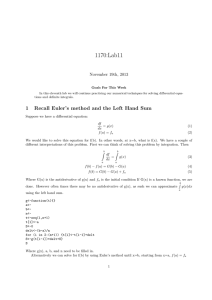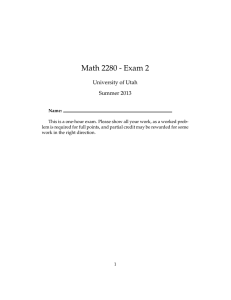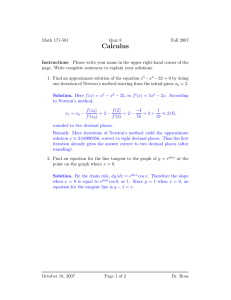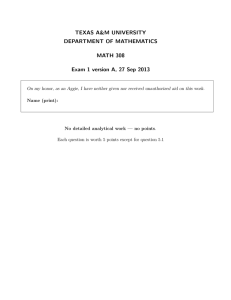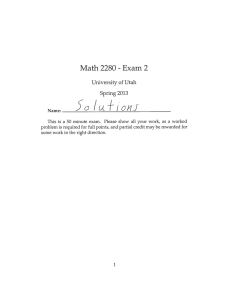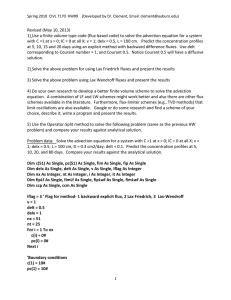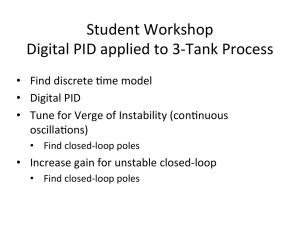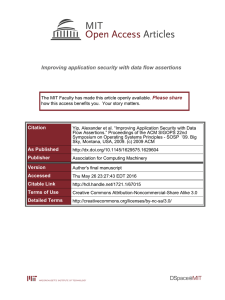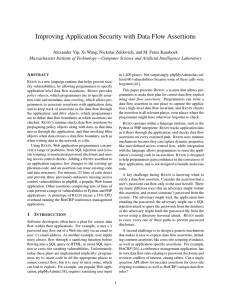1170:Lab10 November 12th, 2013
advertisement
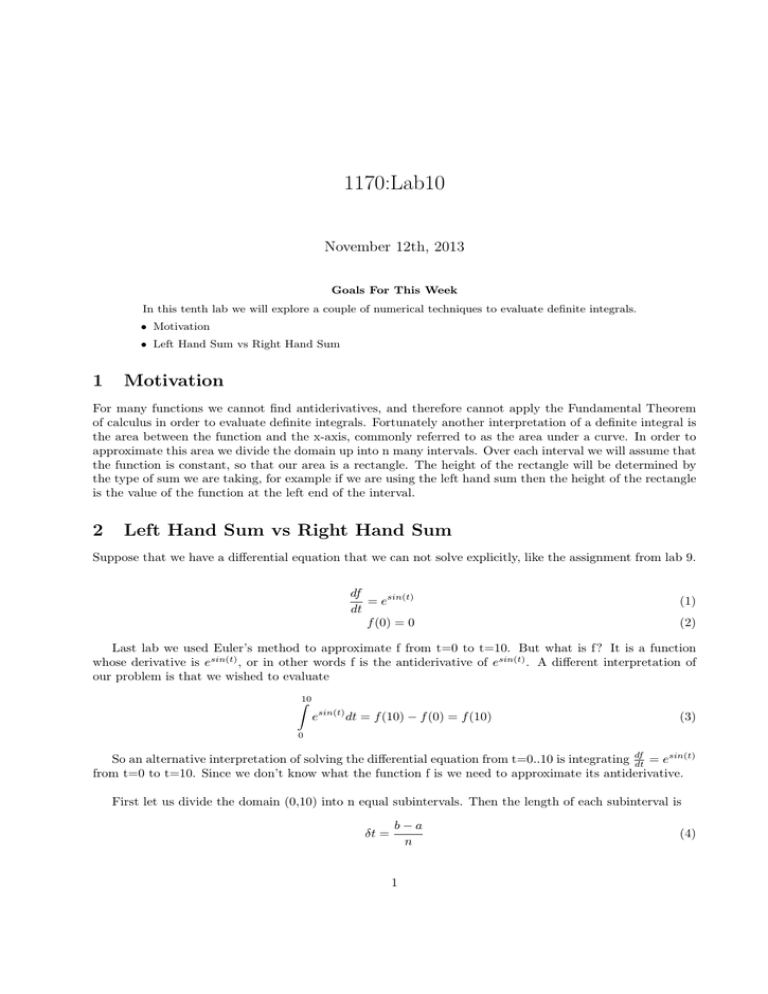
1170:Lab10
November 12th, 2013
Goals For This Week
In this tenth lab we will explore a couple of numerical techniques to evaluate definite integrals.
• Motivation
• Left Hand Sum vs Right Hand Sum
1
Motivation
For many functions we cannot find antiderivatives, and therefore cannot apply the Fundamental Theorem
of calculus in order to evaluate definite integrals. Fortunately another interpretation of a definite integral is
the area between the function and the x-axis, commonly referred to as the area under a curve. In order to
approximate this area we divide the domain up into n many intervals. Over each interval we will assume that
the function is constant, so that our area is a rectangle. The height of the rectangle will be determined by
the type of sum we are taking, for example if we are using the left hand sum then the height of the rectangle
is the value of the function at the left end of the interval.
2
Left Hand Sum vs Right Hand Sum
Suppose that we have a differential equation that we can not solve explicitly, like the assignment from lab 9.
df
= esin(t)
dt
f (0) = 0
(1)
(2)
Last lab we used Euler’s method to approximate f from t=0 to t=10. But what is f? It is a function
whose derivative is esin(t) , or in other words f is the antiderivative of esin(t) . A different interpretation of
our problem is that we wished to evaluate
Z10
esin(t) dt = f (10) − f (0) = f (10)
(3)
0
sin(t)
So an alternative interpretation of solving the differential equation from t=0..10 is integrating df
dt = e
from t=0 to t=10. Since we don’t know what the function f is we need to approximate its antiderivative.
First let us divide the domain (0,10) into n equal subintervals. Then the length of each subinterval is
δt =
b−a
n
1
(4)
Now we need to find the endpoints of our intervals. We start at a, increase by δt each time until we reach
b.
t0 = a
(5)
t1 = a + δt
(6)
t2 = a + 2 ∗ δt
(7)
...
(8)
tn−1 = b − δt
(9)
tn = b
(10)
Then if we are using the Left Hand Sum we want to evaluate the sum of the n rectangles with width,
w = δt and height determined by the left endpoint of the intervals.
So the Left Hand Sum is:
1st : h = f (t0 )
(11)
2nd : h = f (t1 )
(12)
...
(13)
(n − 1)st : h = f (tn−2 )
(14)
nth : h = f (tn−1 )
(15)
n−1
X
g(ti ) ∗ δt
(16)
g(ti ) ∗ δt
(17)
0
Where g(t) =
df
dt
Then the Right hand sum is
n
X
1
Notice how the limits of the sum are different for the 2 methods.
3
R Code for the Left Hand Method
First we are going to define some variables for the equation:
df
= g(t)
dt
(18)
(19)
We will call:
a = the left endpoint, or our initial value
b = the right endpoint, or out terminal value
n = the number of time steps we want to make
delt = timestep δt
t = a sequence of the time values
g = the derivative function
S = the sum of the rectangular areas
Consider the following differential equation which we want to solve over the interval t=(0,10)
df
= et
dt
2
(20)
Then:
a=0
b = 10
n = 10
delt = (b-a)/n
t = seq(1,n) (preallocate the time values)
S = partial sum of the rectangles
g = et
We will now iterate the code in a for loop:
g<-function(t){exp(t)}
a<-0
b<-10
n<-10
t<-seq(1,n+1)
t[1]<-a
S<-0
delt<-(b-a)/n
for (i in 2:(n)) {t[i]<-t[i-1]+delt
S<-g(t[i-1])*delt+S}
S
How does this code compare to the code for Euler’s Method?
How would you change the code to evaluate the Right Hand Sum?
Change n to be 100 and rerun the code. Does this give us a better approximation of the solution?
4
Assignment for this week
Consider the differential equation
df
dt
= esin(t) . Let n=100 for all of your codes.
1. Use the left hand sum method to find
R10
esin(t) . How does this compare to your Euler’s Method solution
0
to the differential equation from Lab 9?
2. Now write a right hand sum code and use it to evaluate the same integral. How does this compare to
the left hand sum?
3
